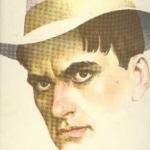Sometimes it seems to us that all the most interesting things were discovered a long time ago, and there is no point in reinventing the wheel. But this is not so at all. Science does not stand still. Every day are made new discoveries. We have collected ten of the brightest of them, made only Russian scientists, and have tried to describe them in such a way that you can easily tell your children about the latest in science.
New discoveries in the field of archeology
rejuvenated mammothsUntil recently, it was believed that mammoths became extinct in the Stone Age, about 10 thousand years ago. However, new finds by Russian scientists on Wrangel Island prove that mammoths lived here. in the 2000s BC. It turns out that in terms of historical age, these giants are contemporaries of the ancient Dreks and Egyptian pharaohs!

Denisov man
In 2010, Siberian archaeologists discovered a new kind of primitive people. Now Denisovans are in the company of Cro-Magnons and Neanderthals. Their remains were found in the Denisovskaya cave in Altai. The age of the Denisovsky man is about 40 thousand years.

New discoveries in the field of geography
Ice lakes in AntarcticaOur scientists still continue to find new subglacial lakes in Antarctica. At the moment there are more than 140 of them open! Lake Vostok is the largest subglacial lake in the world. His discovery was one of the greatest of the last half century. The lake is under a layer of ice 4 kilometers thick, and its age is several million years! At the moment, research on Lake Vostok is ongoing. If scientists find microorganisms in the waters of the lake, then this will prove the possible existence of primitive life in our solar system on the moons of Jupiter (Callisto, Europe) and Saturn (Enceladus).

New discoveries in the field of astronomy
The sharpest telescopeRadioastron is a large-scale space project launched by Russian scientists. As part of the project, launched into orbit the world's largest space telescope, listed in the Guinness Book of Records. On the this moment it is the most sharp-sighted telescope in the world. With its help, scientists will be able to observe the processes taking place in distant galaxies, black holes and unravel other mysteries of the Universe.

New solar discoveries
Koronas is a Russian project that studies solar activity. Over the past 20 years, our scientists have launched 3 satellites, which are the only ones in the world that observe the Sun. During this time, a number of unique discoveries were made: the nature solar flares, solar corona and other processes on the Sun.

Discovery of water on Mars
Russian detector Hand (HEND), installed on the American Mars Odyssey orbiter in 2001, discovered water ice on the red planet! For 14 years, this device has been collecting information about Mars for scientists. Perhaps very soon other news about the life of our space neighbor awaits us.

New discoveries in chemistry
Flerovium, Livermorium, Ununoctium,..From 1999 to 2010, the periodic table was replenished 6 new elements thanks to Russian scientists. Physicists from the city of Dubna near Moscow were able to get them thanks to a special installation with the Russian name "Masha". These are flerovium, livermorium, ununoctium, ununtrium, ununpentium, ununseptium. Total in the table to date 118 chemical elements. And there are still empty cells!

New discoveries in physics
The most durable materialIn 2010, a group of our scientists received Nobel Prize for the discovery of a superstrong material - graphene. Graphene 200 times stronger than steel yet very thin and light. To break the thinnest graphene film with a thickness of 0.01 mm, it is necessary to apply a force weighing 7 tons (this is an adult elephant)! The scope of graphene is wide: medicine, electronics, space and aircraft engineering and many other areas of science and life.

Semiconductors and the Alferov laser
In 2000 Nobel Prize in physics was received by our compatriot Zhores Alferov. Today we all use his developments: all fiber-optic communications are built on semiconductors and the Alferov laser. And it is only thanks to his discoveries that our mobile phones, computers, CD players and many other devices work.

New discoveries in mathematics
Bagel, apple and the universeIn 2003, Russian scientist Grigory Perelman solved one of the 7 greatest mysteries of the millennium. He proved the famous Poincaré hypothesis, which confirmed the hypothesis of the origin of our Universe - the Big Bang theory. How to explain the meaning of a complex mathematical theory to a child? Let's try to do this using the example of an apple and a bagel. If you squeeze an apple for a long time and strongly, it will turn into a dot. But the bagel cannot be squeezed into a point, it will burst. And Perelman proved it scientifically. For the discovery, he was awarded the Fields Prize of $ 1 million, which the scientist ... refused!

This world still holds many mysteries that our children will have to unravel. Captivate your little scientists with interesting stories, inspire creativity. And may a sea of amazing discoveries await them in life!
The world does not stand still, so every year scientists make significant leaps in various areas science and technology. 2016 was no exception, and therefore we decided to collect the most interesting inventions and important scientific discoveries of the outgoing year. The future is not far off!



On the official website you can learn in detail about the possibilities and purpose of the program: www.magicleap.com
HUGE MAGIC LEAP HOLOGRAMS
With the help of the Magic Leap device, now at school you can see the largest animal in the world jumping out of the water - a whale, see how things, animals or nature look like in life, create entire worlds superimposed on real things, imaginary dragons and little fairies .. The main feature the fact that the image is not just three-dimensional, but also that it moves, creating animation! No, this is not the distant future - you can do it now!

By the way, you can use it now.
INVENTION OF ARTIFICIAL LEATHER
A group of scientists from America has developed a skin that looks like an elastic film. It can be used not only not only for beauty purposes - for example, to reduce the visibility of wrinkles, but also for medical purposes - for example, for constant hydration, which is necessary for certain skin diseases.

Data is written to the media using ultra-high-speed laser pulses.
DEVELOPMENT OF THE METHOD FOR ETERNAL DATA STORAGE
Until 2016, there was no way to store digital information indefinitely. However, scientists at the University of Southampton, using nanostructured glass, have developed a new process for writing and reading data. The device itself looks like a small glass disk slightly larger than a coin, but it can store up to 360 TB of data and withstand temperatures up to 1000 ° C.

A unique thing that helps to be with loved ones at a distance from each other.
HOLOGRAPHIC TELEPORT
The device was invented and invented by scientists at Microsoft. A person who is thousands of kilometers away can send his hologram for communication and even interaction.

According to some futurists, in 30 years people will be massively grown out of the body.
SCIENTISTS GROW LIMB IN TEST TUBE FOR THE FIRST TIME
The first living limb appeared, grown in the laboratory by scientists from the Massachusetts hospital. When the limb sewn to the body of the rat filled with blood, the animal began to move its new paw. If now people who have lost their arms or legs can only use a prosthesis, then in just a few years they will be able to become the owner of a real living organ again!

It can only be downloaded that computers are becoming smarter than even the smartest earthly representatives of the planet.
VICTORY OF A COMPUTER OVER A HUMAN IN THE GAME "GO"
Go is one of the oldest games on Earth, and probably the most difficult of all. Until 2016, the best player in the world was the human Lee Sedol, but for the first time ever, the AlphaGo computer program won. Demis Hassabis, founder of Google DeepMind, compared this event to landing a man on the moon.

Such numbers are widely used in cryptography, but the new number found is too large for practical use.
DISCOVERY OF THE LARGEST PRIME NUMBER
On January 7, 2016, Curtis Cooper's team of mathematicians discovered the largest known prime number, which is 274207281 − 1 and contains 22,338,618 decimal digits. Scientists spent more than 2.5 years searching for it, and received a grant in the amount of 150 thousand dollars.

Now the first stage can be used repeatedly, which will reduce costs.
THE FIRST VERTICAL LANDING OF A ROCKET IN THE OCEAN HAS BEEN CARRIED OUT
Previously, we could only see vertical landing of a rocket in films, but in reality, such a landing is an incredibly difficult task. That is why space agencies build rockets in such a way that spent parts either fall into the ocean or simply burn up in the atmosphere.
On April 8, 2016, SpaceX successfully landed the first stage of a Falcon 9 launch vehicle on a platform into the ocean for the first time, which means that the spent stages can be reused, saving huge money!

Inventors injected CO2 into volcanic rocks, accelerating natural process the transformation of basalt into carbonates, which then become limestone.
With this design, steering is not provided, but is intended only for steeringless control.
LEVITATION TIRES ROTATING IN ALL DIRECTIONS
It turns out that the wheel can be reinvented twice: Goodyear came up with such a discovery when they developed the spherical Eagle 360 tires. They will allow the car to move in any direction, including sideways, facilitating parallel parking, as well as at certain angles and speeds, counteracting slippery surfaces.

"So what" - you will say, not even thinking about the huge opportunities that are now opening up to people.
A FLOWER FLOWED ON THE ISS FOR THE FIRST TIME IN HISTORY
Astronauts have been experimenting with growing plants aboard the International Space Station for years. And a miracle happened, a bright orange aster-zinnia became the first flower that grew in space!

At the moment, planet 9 is still only a hypothetical assumption, since no one has yet seen it with their own eyes, but according to preliminary calculations, it is located at a distance of up to 240,000,000,000 kilometers from the Sun.
PLANET 9 DISCOVERED IN THE SOLAR SYSTEM
Back in the 20th century, theories were put forward about the existence of the ninth planet "X", which follows Neptune. Its presence was indicated by the peculiarity of the behavior of gravitational waves, which could be caused only by the presence of a very massive object. Astronomers who wrote about their discovery say that the probability that some very dense cloud of asteroids or meteorites was taken for the 9th planet is only 0.0007%.

After installing the implant, a man who spent the last 6 years of his life completely paralyzed regained the ability to move his fingers.
CYBERNETIC IMPLANT
This is perhaps the most useful and important invention of 2016 that can give a paralyzed person to move his limbs! This chip is installed in the human brain, from where it sends signals to the receiver - it processes them and transmits the data to a special electronic glove on the person's hand. The glove contains electrical wires that stimulate certain muscles and make the fingers move.

It is worth adding that there is already a final version of the project for small plants.
DEVELOPMENT OF BIOLUMINESCENT TREES
Glowing in the dark trees are planned to be used instead of conventional street lamps. They decided to make the trees glow with the help of an enzyme found in some jellyfish and fireflies.

Invention of the century: compact, spacious, odour-free, does not require cooling and uses only 8% of the house's energy for the control panel.
THE INVENTION OF THE BIO REFRIGERATOR
Another interesting invention of 2016 was the concept of a refrigerator proposed by a Russian designer for the Electrolux Design Lab competition, which cools food with biopolymer gel. It has no shelves, no compartments, no doors - you just stick the food into the gel.

Genome editing involves the introduction of specific DNA that will complement or completely replace the existing genome.
HUMAN GENOME EDITING
And with this scientific discovery at the stage of pregnancy, it will be possible to choose the sex of the child, it will be possible to get rid of all hereditary genetic abnormalities and even make the baby look like a certain parent!

TOPOGRAPHIC MAPPING OF THE BRAIN
In 2016, scientists still managed to study our brain more by mapping it. Important centers of the brain became visible on it, and at the same time, you can view their activity. With the help of experiments, the relationship between the actions of the body and the orders of the brain became clear. Now the technique helps to treat mental disorders, but very soon we will witness how a person will be able to use his abilities in a completely new way.

It turns around not only around the Sun, but also around our planet. But you should not blur in the hope of visiting it, since its dimensions are only 40 to 100 meters in diameter.
THE EARTH GOT "ANOTHER MOON"
NASA scientists have discovered an asteroid that has been captured by our planet's gravity and is now orbiting Earth. In fact, this makes him the second natural companion our planet. Of course, a lot of things fly around our planet: space stations, artificial satellites and just thousands of tons of various space debris. But we have always had only one moon. And now there are two of them, as NASA confirmed the existence and orbit of the object 2016 HO3.
Over the past few centuries, we have made countless discoveries that have greatly improved the quality of our Everyday life and understand how the world around us works. Assessing the full importance of these discoveries is very difficult, if not almost impossible. But one thing is certain, some of them have literally changed our lives once and for all. From penicillin and the screw pump to X-rays and electricity, here is a list of the 25 greatest discoveries and inventions of mankind.
25. Penicillin
If the Scottish scientist Alexander Fleming had not discovered penicillin, the first antibiotic, in 1928, we would still be dying from diseases such as stomach ulcers, abscesses, streptococcal infections, scarlet fever, leptospirosis, Lyme disease and many others.
24. Mechanical watch
Photo: pixabay
There are conflicting theories about what the first mechanical watches actually looked like, but most often researchers adhere to the version that in 723 AD, the Chinese monk and mathematician Ai Xing (I-Hsing) created them. It was this fundamental invention that allowed us to measure time.
23. Heliocentrism of Copernicus
Photo: WP / wikimedia
In 1543, almost on his deathbed, the Polish astronomer Nicolaus Copernicus unveiled his landmark theory. According to the works of Copernicus, it became known that the Sun is our planetary system, and all its planets revolve around our star, each in its own orbit. Until 1543, astronomers believed that the Earth was the center of the universe.
22. Blood circulation
Photo: Bryan Brandenburg
One of the most important discoveries in medicine was the discovery of the circulatory system, which was announced in 1628 by the English physician William Harvey. He was the first person to describe the entire circulation system and properties of the blood that the heart pumps throughout our body from the brain to the fingertips.
21. Screw pump
Photo: David Hawgood / geographic.org.uk
One of the most famous ancient Greek scientists, Archimedes, is considered the author of one of the world's first water pumps. His device was a rotating corkscrew that pushed water up a pipe. This invention took irrigation systems to the next level and is still used today in many wastewater treatment plants.
20. Gravity
Photo: wikimedia
Everyone knows this story - Isaac Newton, the famous English mathematician and physicist, discovered gravity after an apple fell on his head in 1664. Thanks to this event, we first learned why objects fall down, and why the planets revolve around the Sun.
19. Pasteurization
Photo: wikimedia
Pasteurization was discovered in the 1860s by the French scientist Louis Pasteur. It is a heat treatment process during which pathogenic microorganisms are destroyed in certain foods and drinks (wine, milk, beer). This discovery had a significant impact on public health and the development of the food industry around the world.
18. Steam engine
Photo: pixabay
Everyone knows that modern civilization was forged in factories built during the Industrial Revolution, and that it was all done using steam engines. The steam-powered engine was invented a long time ago, but over the past century it has been significantly improved by three British inventors: Thomas Savery, Thomas Newcomen, and the most famous of them, James Watt (Thomas Savery, Thomas Newcomen, James Watt).
17. Conditioner
Photo: Ildar Sagdejev / wikimedia
The primitive climate control system has existed since ancient times, but it changed significantly when the first modern electric air conditioner appeared in 1902. It was invented by a young engineer named Willis Carrier, a native of Buffalo, New York (Buffalo, New York).
16. Electricity
Photo: pixabay
The fateful discovery of electricity is credited to the English scientist Michael Faraday. Among his key discoveries, it is worth noting the principles of action electromagnetic induction, diamagnetism and electrolysis. Faraday's experiments also led to the creation of the first generator, which became the forerunner of the huge generators that today produce the electricity we are used to in everyday life.
15. DNA
Photo: pixabay
Many believe that it was the American biologist James Watson and the English physicist Francis Crick (James Watson, Francis Crick) who discovered in the 1950s, but in fact, this macromolecule was first identified back in the late 1860s by the Swiss chemist Friedrich Meischer (Friedrich Miescher). Then, several decades after Meisher's discovery, other scientists conducted a series of studies that finally helped us figure out how an organism passes its genes to the next generation, and how its cells work.
14. Anesthesia
Photo: Wikimedia
Simple forms of anesthesia such as opium, mandrake and alcohol have been used by humans for a long time, and the first references to them date back to 70 AD. But since 1847, pain relief has been taken to a new level, when the American surgeon Henry Bigelow first introduced ether and chloroform into his practice, making extremely painful invasive procedures much more bearable.
13. Theory of relativity
Photo: Wikimedia
Including two interrelated theories of Albert Einstein, ad hoc and general theory relativity, the theory of relativity, published in 1905, transformed the entire theoretical physics and astronomy of the 20th century and eclipsed the 200-year-old theory of mechanics proposed by Newton. Einstein's theory of relativity became the basis for much of scientific works modernity.
12. X-rays
Photo: Nevit Dilmen / wikimedia
German physicist Wilhelm Conrad Rontgen accidentally discovered X-rays in 1895 when he was observing the fluorescence produced by a cathode ray tube. For this landmark discovery in 1901, the scientist was awarded the Nobel Prize, the first of its kind in the field of physical sciences.
11. Telegraph
Photo: wikipedia
Since 1753, many researchers have been conducting their experiments to establish communication at a distance using electricity, but a significant breakthrough did not come until a few decades later, when in 1835 Joseph Henry and Edward Davy (Joseph Henry, Edward Davy) invented the electrical relay. With this device, they created the first telegraph 2 years later.
10. Periodic system of chemical elements
Photo: sandbh / wikimedia
In 1869, the Russian chemist Dmitri Mendeleev noticed that if you arrange chemical elements according to them atomic mass, they are conditionally lined up in groups with similar properties. Based on this information, he created the first periodic system, one of the greatest discoveries in chemistry, which was later nicknamed the periodic table in his honor.
9. Infrared rays
Photo: AIRS / flickr
Infrared radiation was discovered by the British astronomer William Herschel in 1800, when he was studying the heating effect of light of different colors, using a prism to spread the light into a spectrum, and measuring the changes with thermometers. Today infrared radiation used in many areas of our lives, including meteorology, heating systems, astronomy, tracking heat-intensive objects and many other areas.
8. Nuclear magnetic resonance
Photo: Mj-bird / wikimedia
Today, nuclear magnetic resonance is constantly used as an extremely accurate and efficient diagnostic tool in the field of medicine. This phenomenon was first described and calculated by the American physicist Isidor Rabi in 1938 while observing molecular beams. In 1944, the American scientist was awarded the Nobel Prize in Physics for this discovery.
7. Moldboard plow
Photo: wikimedia
Invented in the 18th century, the mouldboard plow was the first plow that not only turned up the soil, but also stirred it up, which made it possible to cultivate even very stubborn and stony land for agricultural purposes. Without this tool, agriculture as we know it today would not exist in northern Europe or central America.
6 Camera Obscura
Photo: wikimedia
The forerunner of modern cameras and camcorders was the camera obscura (translated as dark room), which was an optical device used by artists to create quick sketches while traveling outside their studios. A hole in one of the walls of the device served to create an inverted image of what was happening outside the chamber. The picture was displayed on the screen (on the opposite wall of the dark box from the hole). These principles have been known for centuries, but in 1568 the Venetian Daniel Barbaro modified the camera obscura with converging lenses.
5. Paper
Photo: pixabay
Papyrus and amate, used by ancient Mediterranean peoples and pre-Columbian Americans, are often considered the first examples of modern paper. But it would not be entirely correct to consider them real paper. References to the first writing paper production date back to China during the Eastern Han Empire (AD 25-220). The first paper is mentioned in the annals dedicated to the activities of the judicial dignitary Cai Lun (Cai Lun).
4. Teflon
Photo: pixabay
The material that keeps your frying pan from burning was actually invented completely by accident by American chemist Roy Plunkett when he was looking for a replacement for refrigerants to make your home safer. During one of his experiments, the scientist discovered a strange slippery resin, which later became better known as Teflon.
3. Theory of evolution and natural selection

Photo: wikimedia
Inspired by his observations during his second exploratory journey in 1831-1836, Charles Darwin began to write his famous theory of evolution and natural selection, which, according to scientists from around the world, has become a key description of the mechanism of development of all life on Earth.
2. Liquid crystals
Photo: William Hook / flickr
If the Austrian botanist and physiologist Friedrich Reinitzer had not discovered liquid crystals while testing the physico-chemical properties of various cholesterol derivatives in 1888, today you would not know what LCD TVs or flat LCD monitors are.
1. Polio vaccine
Photo: GDC Global / flickr
On March 26, 1953, American medical researcher Jonas Salk announced that he had successfully tested a vaccine against polio, a virus that causes severe chronic illness. In 1952, an epidemic of this disease diagnosed 58,000 people in the United States, and the disease claimed 3,000 innocent lives. This spurred Salk to seek salvation, and now the civilized world is safe at least from this disaster.




